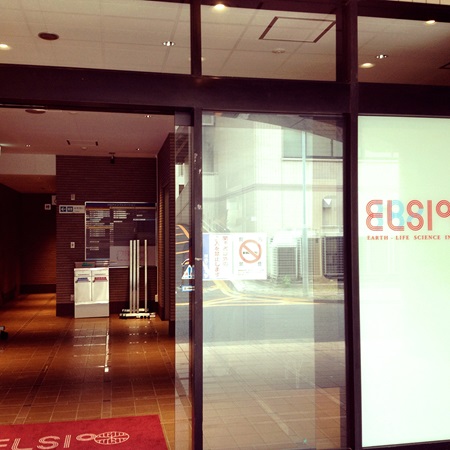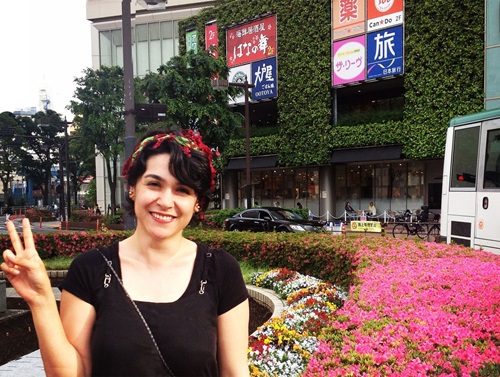Blog No.101
Author: Betül Kaçar

It has been about two years since my last visit to ELSI. From the first step in the door, it was apparent that many changes had occurred that had altered the research atmosphere. At the entryway, a screen now displays all of the meetings, seminars and discussions planned for that day and the next couple of weeks throughout the building. In a single glance, you can quickly absorb the areas of interest of various investigators, get a feel for how it relates to the overall goals of the institute, and see what different research groups were currently tackling to achieve those goals. Though this might seem a relatively mundane, almost administrative expression of orderliness, it had completely changed the psychology of the work environment compared to what I'd known before. ELSI was no longer just a disparate group of highly motivated and talented people toiling away at their respective questions of interest under a common theme. The message board was an indication of a higher level of cohesiveness, the existence of a nervous system for a larger group entity. Something different and more elaborate than had existed before in ELSI's early days and I was excited to learn more.
The way that ELSI researchers interact with one another also reflects a transition to a more fluid, multilayered and collaborative style. As is the case for many research institutions, ideas are now readily shared between postdocs, research scientists, tenured and non-tenured faculty, who often meet casually in the first floor discussion area. I am told by many -within and outside of Tokyo Tech- that this is highly atypical for Japan, a country famous for preserving many forms of hierarchy and social status. Not being Japanese, or having been educated here, this seems a bit paradoxical since Japan has a very group-oriented view on many things in society. It is difficult to conceptualize how much the education system in Japan has been tailored to reinforce elements of hierarchy, from K-12 and beyond, to meet the needs of its contemporary society (though a wonderful summary on Japanese life and culture from Columbia University provides some insight). This tailoring is very efficient and has been highly effective at producing the types of leaders and an educated populace that Japan needed to become an economic powerhouse. However, a declining national population and the prospect of having to shutter venerable academic institutions with strong traditions of education, research and development, has prompted the Ministry of Education to create new centers within existing universities to change the very fabric of Japanese research culture. From the WPI website: "These centers are given a high degree of autonomy, allowing them to virtually revolutionize conventional modes of research operation and administration in Japan." The story is simple: Japanese universities must interact with and draw more research activities from the global environment, or atrophy and contract in response to inevitable budget constraints.
By these measures, ELSI's changes seem indicative of success on many fronts. Indeed, some of the ways in which ELSI scientists collaborate with one another in this new environment are comparable to or surpass the norms of North American and European institutions. ELSI scientists regularly gather for cross-laboratory meetings dedicated to various aspects of the origins of life on the first floor of the building; organizing these meetings seems markedly less encumbered by the teaching obligations that normally consume the time of young scientific hires in North America. Another new tendency is that ELSI now invites guest speakers from elsewhere in Japan (i.e., speakers that are not affiliated with Tokyo Tech) to speak for colloquia. Though this is relative common practice in North America and Europe, apparently this is also quite rare in Japan.
The progressive environment that the leaders of ELSI are cultivating is reflected in the scientific discussions carried out by the ELSI scientists. During my limited time at ELSI, I had a chance to listen to the researchers who approach the problem of the origins of life from perspectives grounded in chemistry, physics and applied mathematics. However, I was most excited to see how eagerly ELSI researchers were incorporating biology (particularly evolutionary and systems biology) into their spectrum of science perspectives, which was evident by the attendance, interest and the questions of ELSI researchers during my talk.
All of these observations made me reflect on what makes a multidisciplinary research institution function well, and I couldn't help but see outreach (formal and informal) as a vital part of shaping the culture of an institution. This struck me as a bit ironic, given that education and public outreach (EPO) budgets for many scientific organizations and institutions are getting markedly less attention and funding these days. Are more internationalized institutions taking the direct and indirect benefits of EPO for granted? It's probably not safe or fair to overgeneralize, but I can say that an insightful approach to EPO has the potential to shape the internal culture of an institution as well, if ELSI is any example. EPO is not just talking to students at schools or advertising your activities to the public or highlighting your research successes. When done well, EPO also means taking a thoughtful approach to figuring out how you want your faculty to interact with one another, and to use that interaction as a template for positive interactions and meaningful change in your surrounding community.
In the interest of full disclosure, I should say that I am a founding member of SAGANet, an astrobiology social networking project that was founded with similar ideals in mind. This group of young astrobiologists has tried to fill perceived national and international gaps in astrobiology- and life-origins-related EPO by linking students (at all levels) and researchers with each other through hands on, research-centered activities. Recently, the group has been expanding its ability to broadcast local institutional events related to astrobiology and the origins of life in the universe. ELSI may find that their interests are very heavily aligned with those of SAGANet, especially since SAGANet exists as a means of connecting researchers across many different continents.
At the end of the day, though, it's obvious that the people at ELSI have put a lot of time and introspection into rethinking how research is conducted, both at Tokyo Tech specifically and in Japan generally. Though one of the main objectives of WPI's funding of ELSI is to act as a catalyst to help internationalize Tokyo Tech's research culture, it seems more likely that, in striving to make these reforms, ELSI will build and establish a unique version of collaborative culture that is uniquely Japanese. Once again, I am grateful to ELSI scientists and their families for hosting me and giving their time to show me the wonderful Ookayama and Shinjuku neighborhoods, the art of Japanese style eating, and for including a bonus trip that allowed me to see Tokyo from the top of a secret campus building! (I won't say who showed me the spot you should not miss; let's just say his name was 'John'.)

